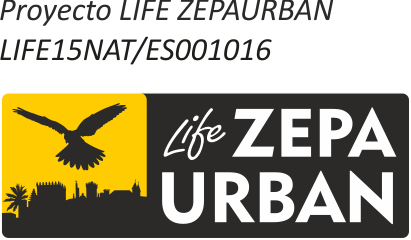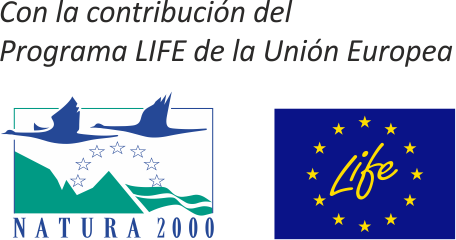Based on the preliminary results of the preparatory action A1 (Initial census) and the existing information available to the General Directorate of the Environment (DGMA), colonies will be identified that show negative trends in size and the viability of starting reinforcement will be analysed.
DEMA will prepare a technical report which will include biological, economic and social criteria. With the assessment by the Scientific Committee (action F2) the DGMA, responsible for the management of urban SPAs, will decide the colony in which the action will take place.
To undertake this population reinforcement, it is necessary to have availability of chicks that have been raised in DEMA’s Lesser Kestrel Captive Breeding Centre during the three years (2018 – 2020)
During the breeding programme there will be an exhaustive control of the birds: individual data records, each pair’s history, control on pair formation, monitoring clutches, elimination of negative factors that could affect the reproductive cycle of the colony and detailed control of hatching and growth of chicks.
It will be essential that the birds have no awareness of human presence in the breeding process to ensure that the individual birds will be able to be released in the natural world.
As well as the breeding birds, the chicks will go through veterinary controls to guarantee optimal conditions of health and before release will be individually marked with an official metal ring and a PVC ring.
When the chicks are 18-20 days old (which will guarantee a high return percentage to the colony), they will be transported in special cages to the release point where a method, created by DEMA, of “Colony Environment”, based on hacking and incorporating an innovative Release Module, will be applied.
This technique enhances the fix that the chicks will have to the release point, creating a relationship like that established in natural colonies, avoiding chicks being isolated from adults during such an important stage in their development and indispensable for the necessary imprinting on the release area. This colony environment also draws the attention of individuals from the wild population and they quickly arrive at the site and many of these will become established in the colony too.
The Release Module consists of two or more release boxes in which the chicks are placed, coupled with a closed metallic structure holding irrecoverable adults, which will be designed according to the local requirements, including means to avoid access by predators, chicks falling out etc.
The chicks will be held inside for two or three days until they are habituated to the space, after which time a trap-door will be opened that allows access outside the cage. Visual contact between the adults and chicks will be constant, the intraspecific relationship is never broken and indeed some adults will be stimulated to show parental instinct in response to the begging behaviour from the chicks. This will further aid imprinting.
Before the first release and during the whole process the DGMA will be undertaking actions to minimise the risks that are bringing about the population declines in the colony to avoid the trend continuing. These activities will include awareness campaigns (action E7) in the urban SPA. Furthermore, the selected SPA will be included in the scope of action D2 – a study of the perception of the local population in the urban SPAs about lesser kestrels.
Responsible for implementation: General Directorate of the Environment and DEMA.
With the support: Ministerio de Agricultura, Alimentación y Medio Ambiente a través de la Fundación Biodiversidad


